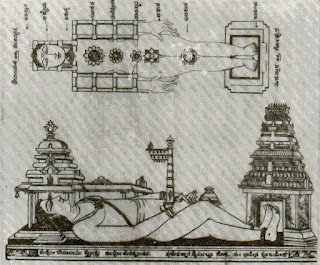Network Level
i) https- secured server certified by Verisign with User ID and password protection
ii) Mapping of IP addresses thro’ static Network Address Translation(NAT)
iii) Java/ActiveX content filtering
iv) Internet Protocol Security(IPSec), tunnel mode deployment to implement Virtual Private Network (VPN)
v) Security services for multimedia applications and protocols including Voice Over IP(VoIP)
vi) Load balancing and clustering of servers
vii) Network Time Protocol(NTP)
viii) Anti-Privacy Invasive Software
ix) Anti virus software
Hardware Level
i) Port level security with Cisco Private Internet Exchafirewall or Cisco Adaptive Security Appliance(ASA)or Cisco PIX end of sale with special operating system
ii) Having fire walls certified by Institute of Chartered Secretaries and Administrators(ICSA), routers ,remote access and network segmentation
iii) Intruder Detection and Prevention System(IDPS) should be capable of stopping attacks on File Transfer Protocol (FTP), Internet Control Message Protocol(ICMP), Transmission control
Protocol(TCP), User Diagram Protocol(UDP), IP and Domain Name System(DNS) .
iv) Proper Disaster Recovery System(DRS)
v) Servers should be located in DeMilitarised Zone(DMZ)
Application Level
- Authentication of the user
- Authorization of the user
- Integrity of information
- Confidentiality of information
- Non-repudiation of transaction
- Comply with Open Web Application Security project (OWASP)
- Standardisation, Costing, Quality Certification(STQC) certified.
- Role based access
-Rule based access
- Access Control List (ACL)
Database Level:
i) Data encryption/decryption with Public key Infrastructure(PKI) implementation.
ii) Secure Socket layer(SSL) for transmission of data
iii) Audit trial
iv) Fine grained access
v) Row level security in the database so users can have access to only the data that they require to see.
i) https- secured server certified by Verisign with User ID and password protection
ii) Mapping of IP addresses thro’ static Network Address Translation(NAT)
iii) Java/ActiveX content filtering
iv) Internet Protocol Security(IPSec), tunnel mode deployment to implement Virtual Private Network (VPN)
v) Security services for multimedia applications and protocols including Voice Over IP(VoIP)
vi) Load balancing and clustering of servers
vii) Network Time Protocol(NTP)
viii) Anti-Privacy Invasive Software
ix) Anti virus software
Hardware Level
i) Port level security with Cisco Private Internet Exchafirewall or Cisco Adaptive Security Appliance(ASA)or Cisco PIX end of sale with special operating system
ii) Having fire walls certified by Institute of Chartered Secretaries and Administrators(ICSA), routers ,remote access and network segmentation
iii) Intruder Detection and Prevention System(IDPS) should be capable of stopping attacks on File Transfer Protocol (FTP), Internet Control Message Protocol(ICMP), Transmission control
Protocol(TCP), User Diagram Protocol(UDP), IP and Domain Name System(DNS) .
iv) Proper Disaster Recovery System(DRS)
v) Servers should be located in DeMilitarised Zone(DMZ)
Application Level
- Authentication of the user
- Authorization of the user
- Integrity of information
- Confidentiality of information
- Non-repudiation of transaction
- Comply with Open Web Application Security project (OWASP)
- Standardisation, Costing, Quality Certification(STQC) certified.
- Role based access
-Rule based access
- Access Control List (ACL)
Database Level:
i) Data encryption/decryption with Public key Infrastructure(PKI) implementation.
ii) Secure Socket layer(SSL) for transmission of data
iii) Audit trial
iv) Fine grained access
v) Row level security in the database so users can have access to only the data that they require to see.











I have my own small IT company and have
ReplyDeletebeen using Network Diagram Software
for a while now. The program is comprehensive and reliable. I would recommend
anyone in this field to try it out and see how easy it is to use.